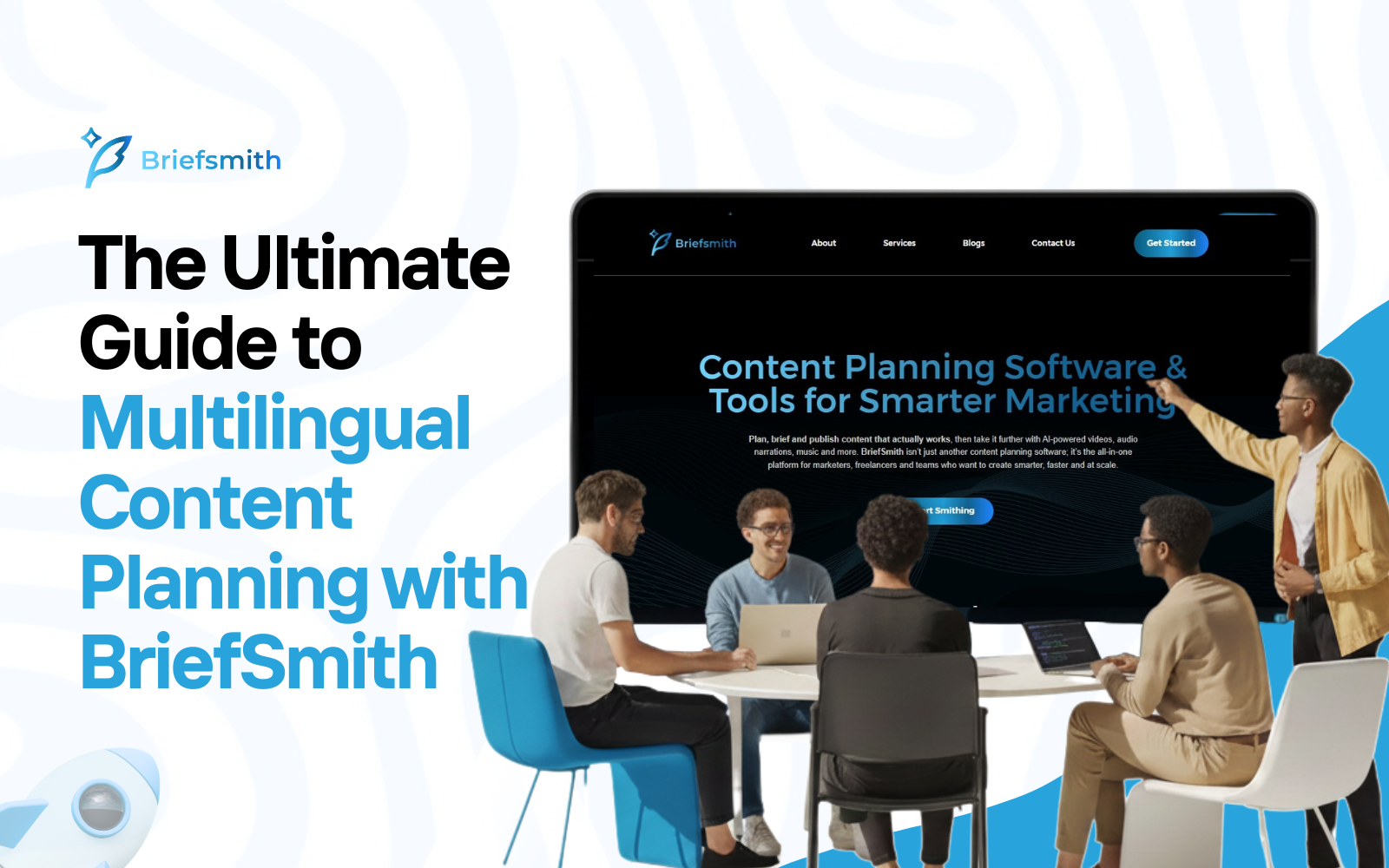The Content Marketing Planning Tools Every Small Business Should Try

The Content Marketing Paradox for Small Businesses
Small businesses live in paradox. On one hand, content marketing is one of the most cost-effective ways to get attention, build authority and drive leads. On the other hand, most small businesses don’t have the time, budget, or staff to plan and execute consistently.
The result? Many try content once or twice, a blog post here, a social campaign there, but quickly burn out when the effort doesn’t seem to match the return.
The problem isn’t that content doesn’t work. It’s that the tools being used are either too basic (sticky notes, spreadsheets) or too bloated (enterprise platforms built for Fortune 500 companies). Small businesses need something different: planning tools that are affordable, lightweight and built to save time.
Why Planning Tools Matter More for Small Businesses
For small businesses, every hour and every dollar matters. Unlike big corporations, you can’t throw money at the problem by hiring an army of content specialists. You need tools that do three things really well:
- Simplify workflows. No extra fluff or features you’ll never use.
- Save time. Automate research, scheduling and collaboration.
- Tie to business outcomes. Content has to support leads and revenue, not just “brand awareness.”
Without a planning system, content often turns into guesswork: random topics, inconsistent posting and no real sense of ROI. Planning tools change that by giving small businesses the clarity and structure they need to compete with bigger players.
For a breakdown of how small creators build consistency, see From Blank Page to Published Post: A Content Creator’s Planner That Actually Works.
What to Look for in Content Marketing Planning Tools
Before diving into specific types of tools, let’s outline what small businesses should prioritize.
1) A Simple Content Calendar
You don’t need enterprise-level Gantt charts. You need a clear, visible way to see what’s publishing when.
2) Built-In Briefing
Random blog posts won’t rank. Look for tools that help you outline, structure, or at least store content briefs so writers don’t start from scratch.
3) SEO Awareness
If your content doesn’t rank in search engines, you’re leaving money on the table. Tools should integrate keyword research or help you align posts with search intent.
4) Collaboration Without Complexity
Even if your “team” is just you and a freelancer, you’ll benefit from shared visibility. Tools should make it easy to assign tasks and keep projects moving.
5) Results Tracking
Small businesses can’t afford to produce content in the dark. Tools that show what’s working (and what isn’t) are worth their weight in gold.
The Types of Tools Small Businesses Should Consider
1) Visual Content Creation Tools
- Canva: Design graphics, social posts and basic infographics without hiring a designer.
- Lumen5: Turn blog posts into short videos for social media.
2) Project and Task Management Tools
- Trello: Simple, card-based system that works great for small teams.
- Asana: More advanced task management with deadlines, subtasks and reporting.
3) Scheduling and Distribution Tools
- Buffer: Schedule social posts across multiple platforms.
- Later: Especially useful for Instagram-heavy businesses.
4) Content Planning + Briefing Tools
This is where most small businesses struggle. Ideas exist, but briefs and calendars don’t. That’s why tools like BriefSmith stand out. Instead of cobbling together keyword research, outlines and deadlines across five different apps, BriefSmith:
- Generates SEO-friendly content briefs in minutes.
- Connects briefs directly to a calendar and workflow.
- Keeps everyone on the same page, whether it’s a team of five or just you and one freelancer.
See also SEO Content Briefs: The Missing Link Between Strategy and Results.
A Day in the Life: With vs. Without Planning Tools
Let’s make this practical.
Without Planning Tools
- Monday: You remember you “should” publish a blog this week.
- Tuesday: You Google some keywords and guess at a topic.
- Wednesday: You start writing, realize you don’t have enough info and stall.
- Friday: You push the deadline back another week.
With Planning Tools
- Monday: Open your content planner. Your topics for the next four weeks are already queued with briefs.
- Tuesday: Write using the brief’s suggested outline and keywords.
- Wednesday: Editor reviews directly in the planner.
- Friday: Post is live, distributed to social and performance is tracked.
One system builds momentum. The other keeps you in a cycle of stop-start frustration.
Why Small Businesses Often Resist New Tools
It’s easy to understand the hesitation:
- Cost anxiety. Even $20/month feels risky when margins are thin.
- Fear of complexity. Tools sound great in theory but can overwhelm in practice.
- “We don’t have time.” Ironically, the very problem tools are designed to solve.
The reality? Not using tools usually costs more in wasted hours, inconsistent posting and missed opportunities.
For a comparison of false savings, check Content Planning Tools vs. Spreadsheets: What Saves You More Time?
How to Choose the Right Tool (Without Getting Overwhelmed)
- Start with your pain point. Is your biggest struggle coming up with briefs? Staying on schedule? Tracking results? Choose a tool that solves that first.
- Keep the stack small. Two or three tools max. Don’t try to replicate a 50-person agency’s tech stack.
- Look for quick wins. A good tool should save you time in the first week of use.
- Commit to 90 days. Give the tool time to integrate into your workflow. Evaluate quarterly, not daily.
A Realistic Small Business Tool Stack
Here’s a lean but powerful setup for most small businesses:
- BriefSmith (planning + briefs)
- Canva (visuals)
- Buffer (distribution)
That covers ideation, planning, production, design and distribution, without overwhelming you with complexity.
The ROI of Better Planning
Here’s what small businesses gain when they implement the right tools:
- Consistency. Publishing stops being sporadic.
- Quality. Briefs and outlines improve focus and depth.
- Speed. Less time wasted on admin, more time creating.
- Results. Content ties directly to goals, leads, sales, awareness.
It’s not about tools for the sake of tools. It’s about creating a system that makes marketing doable for businesses that can’t afford to waste resources.
Final Thoughts
Small businesses don’t need massive marketing budgets to succeed with content. They need planning tools that save time, simplify workflows and connect effort to results.
The best tools don’t feel like “extra work.” They reduce friction, automate busywork and keep you focused on what matters: creating content that attracts and converts customers.
If you’ve been trying to manage content with scattered spreadsheets, sticky notes and last-minute inspiration, the right planning tools can change everything. And if you want a single place to plan, brief and execute without drowning in complexity, BriefSmith was built for exactly that.
Because in the end, content marketing isn’t about who shouts the loudest. It’s about who shows up consistently and tools are what make showing up possible.
Next up: AI Content Brief Generators: Do They Really Save You Time?



